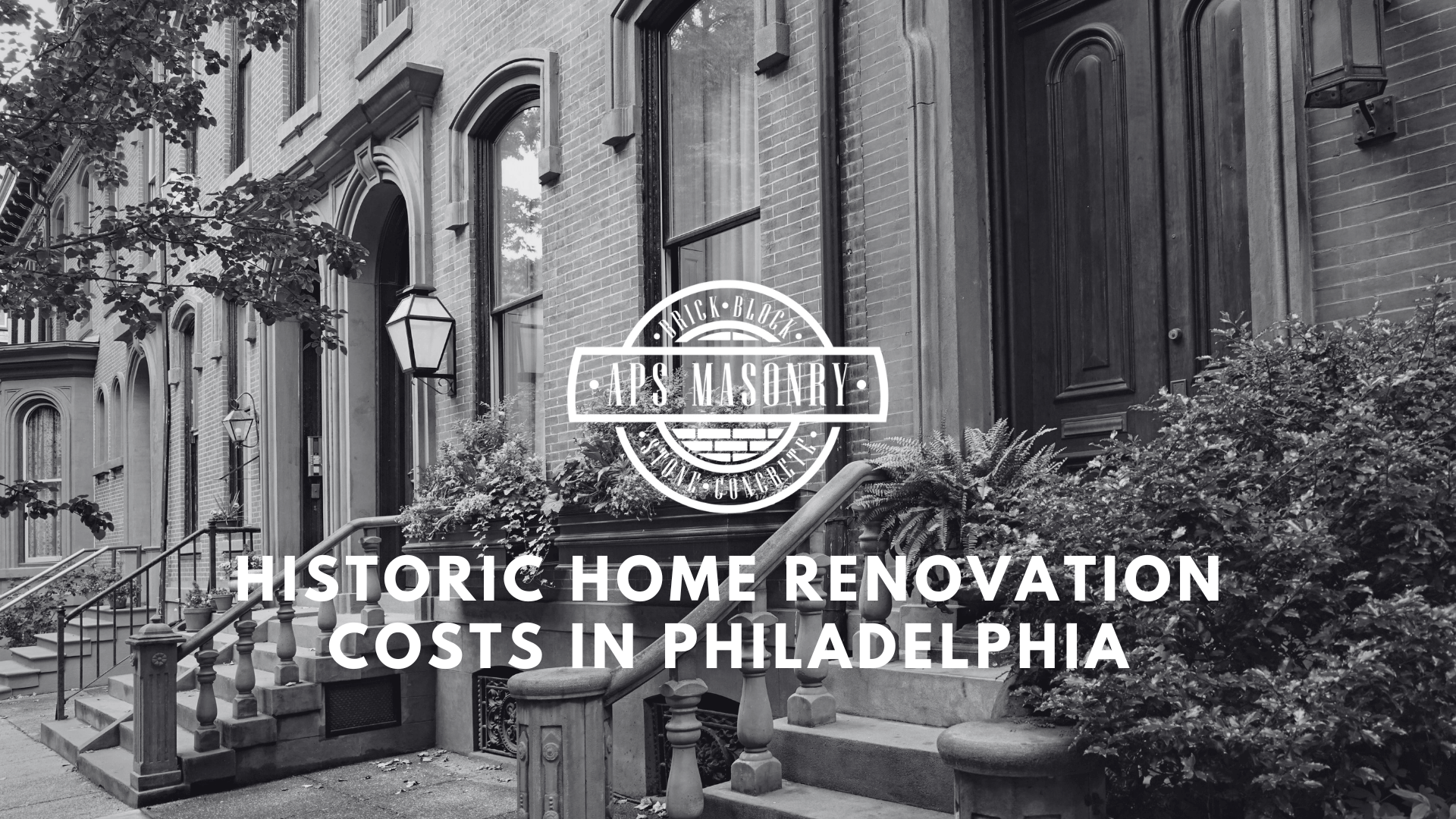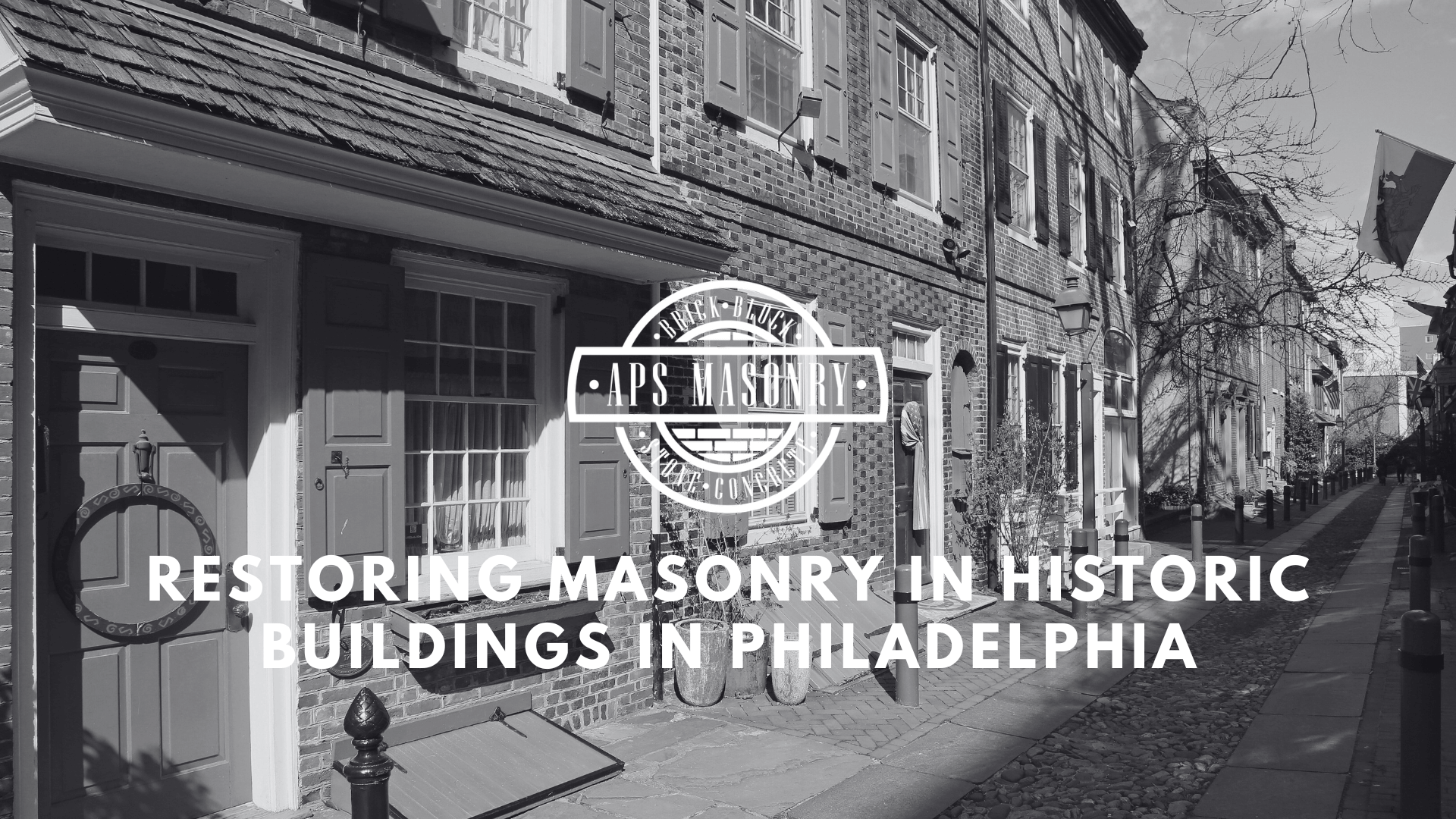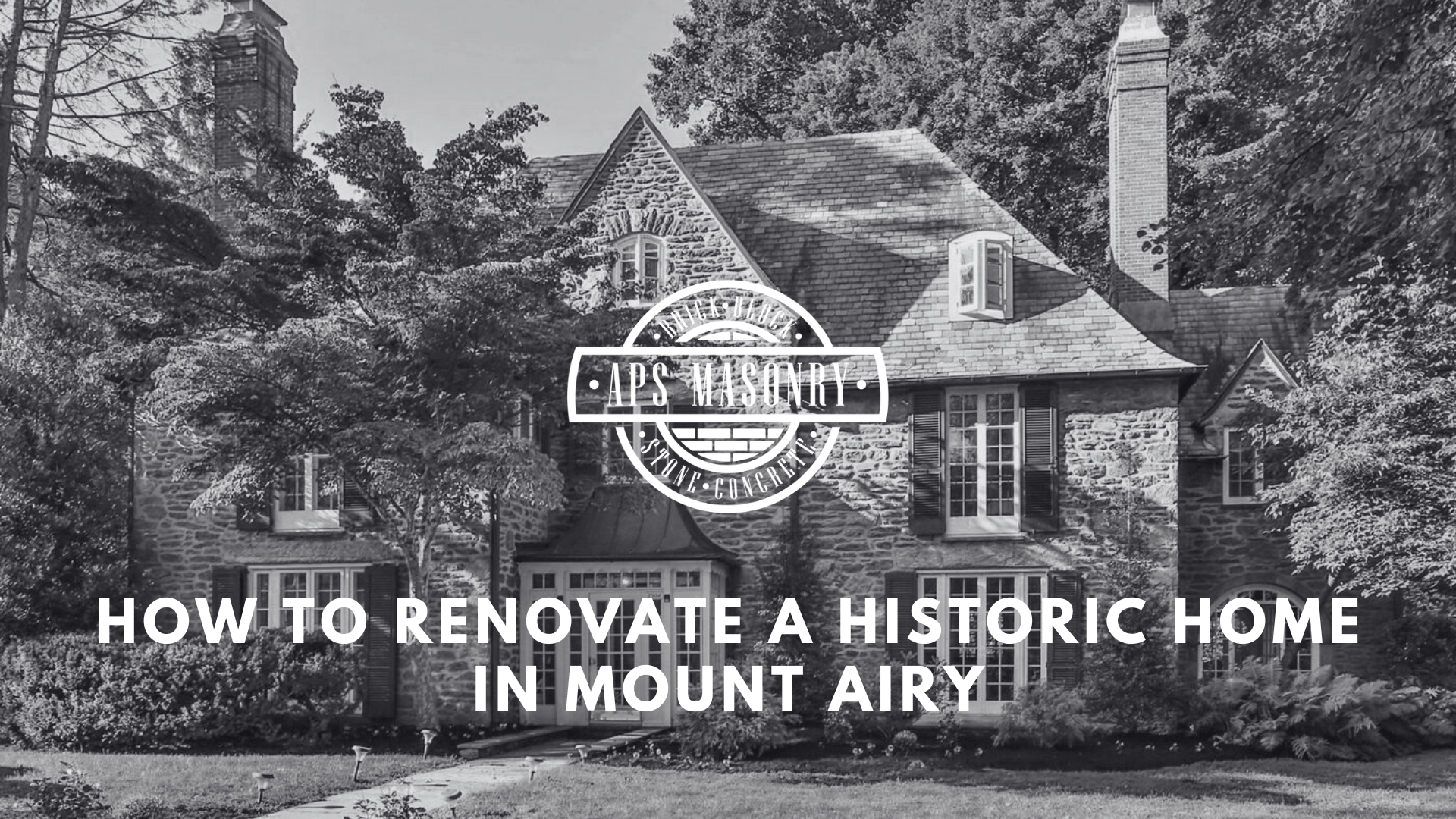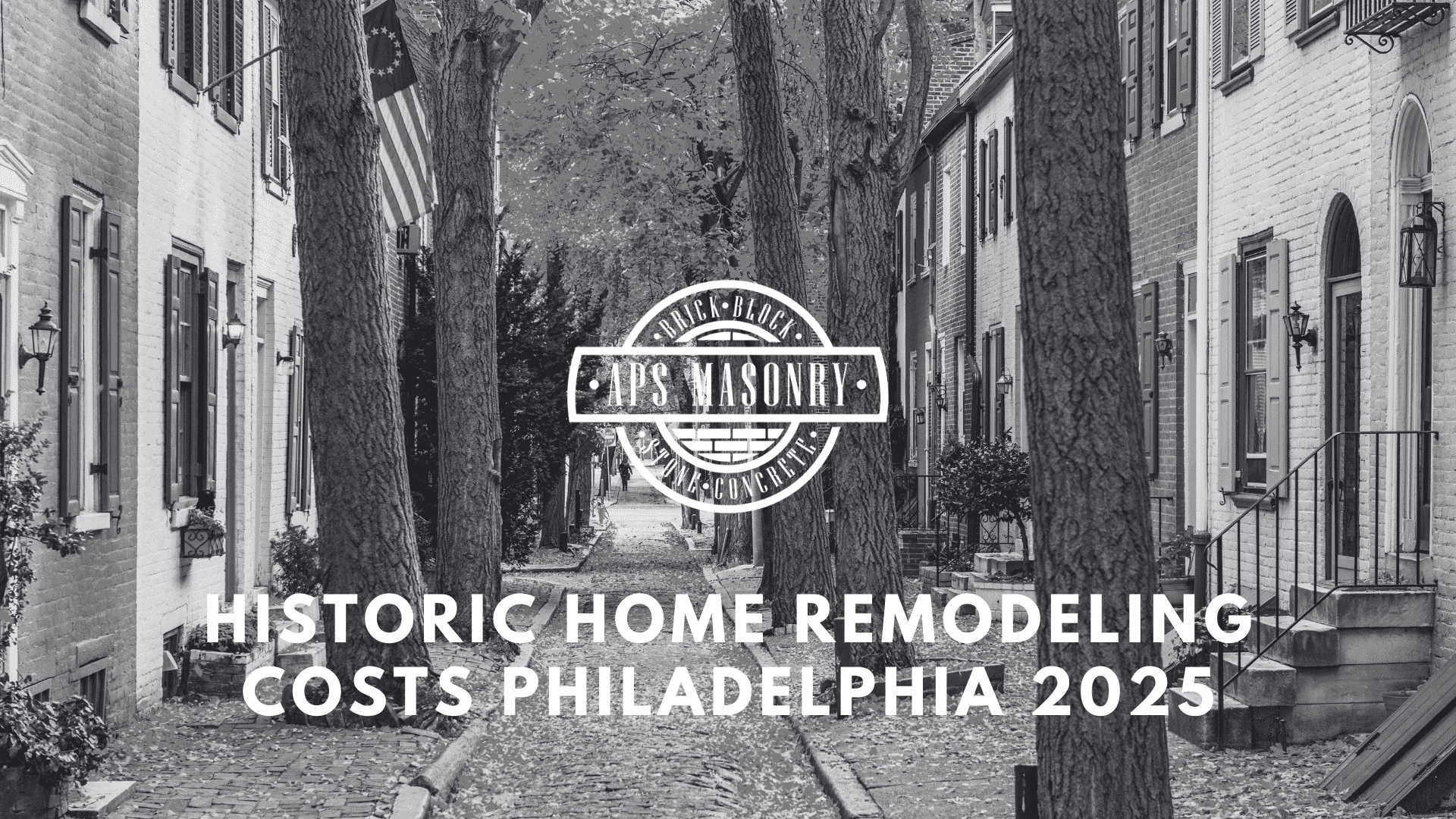Restoring Masonry in Historic Buildings in Philadelphia
Restoring masonry in historic buildings in Philadelphia does more than protect the exterior—it brings structure, story, and value back into alignment.

Renovating a historic home in Philadelphia costs more—but when done right, it adds lasting value, stability, and function to every square foot.
Historic home renovation costs in Philadelphia depend on structure, layout, condition, and materials—not just square footage. Property owners working with older homes often face layered challenges: plaster walls, low ceilings, wet basements, and systems that have outlived their usefulness.
A full home renovation might include electrical rerouting, basement waterproofing, bathroom expansion, or new HVAC installation—all completed under modern building codes. Homes listed on the Philadelphia Register or under Historical Commission oversight bring added complexity, especially for exterior renovations involving windows, garage doors, or masonry work.
Labor costs rise with every detail that has to be preserved, restored, or replaced by hand. Finishes, appliances, fixtures, and floor systems all contribute to the final cost, especially when the house has to function like new without losing what makes it historic.
Call APS Masonry Contracting for a detailed estimate on your historic home renovation—designed around real Philadelphia structures and real budgets.
Philadelphia’s historic places fall into clear categories, each with its own construction methods, materials, and renovation demands. Property owners in different neighborhoods face very different project scopes depending on the type of house they’re working with—and those structural details have a direct impact on renovation costs.
A narrow, three-story brick rowhome in Queen Village typically includes original plaster, steep stairs, small kitchens, and basements with limited headroom. Renovating one of these homes may involve repointing brick walls, waterproofing the foundation, and reworking interior layouts to make the space usable. A full renovation ranges from $175 to $250 per square foot depending on finish level, wall work, and appliance upgrades.
Twins and detached houses from the early 1900s—common in West Philadelphia, Mt. Airy, and East Falls—often require structural repairs. Old framing, sagging floors, and buried plumbing lines slow the work down and push costs higher. Renovation budgets for these properties often land between $200 and $275 per square foot when the job includes flooring, HVAC system upgrades, drywall replacement, and larger kitchen conversions.
Stone colonials and split-levels from the mid-20th century, found in areas like Overbrook and Chestnut Hill, present a different set of issues. Exterior masonry is usually sound, but interiors often need full electrical rewiring, new bathrooms, and modern insulation. These jobs often require gutting portions of the main house while preserving certain walls, windows, or trim profiles. Renovation pricing for these homes can range from $225 to $350 per square foot depending on size, layout, and desired upgrades.
Square footage only explains part of the cost. Several factors including the structure, layout, and age of the building drive the labor and material demands in the local market—and those are what determine the real renovation number.
Every old house comes with its own set of complications. In Philadelphia, historic home renovations often cost more because the work goes beyond materials and finishes. These are the factors that push budgets higher—and why planning with the right contractor matters.
Lead paint removal adds labor and safety steps: Any home built before 1978 likely contains lead paint. Removal must follow federal safety standards, and protective measures increase time, labor costs, and disposal fees.
Historic commission regulations slow down exterior changes: If a home is listed on the Philadelphia Register or within a historic district, changes to the façade, windows, garage doors, or other exterior elements require approval. The Philadelphia Historical Commission may request revisions that impact budget and schedule.
Building codes apply to every upgrade: New framing, plumbing, HVAC systems, and insulation all have to meet modern code. That means deeper demo, additional inspections, and system design from the ground up—even when the house was not originally built for it.
City permits and approvals take time: Permitting in Philadelphia adds weeks to the front of a project. Any job that changes structure, layout, or utilities needs stamped drawings and clearances before it can start.
Hidden damage increases scope mid-project: Behind plaster walls and under old floors, water damage and structural decay often go unseen until work begins. This adds to the budget in real time—and contractors need the experience to handle it without delay.
Access and logistics affect labor efficiency: Many historic homes are built on tight lots with no side entry. That means hand demo, limited tool use, and staging materials in small, controlled spaces. The work still gets done—but not at the pace of modern, wide-open construction.
These are not add-ons. They are the conditions that define how historic properties must be renovated—and why higher costs are the norm in this city.
Interior work drives the majority of renovation costs in historic homes. Each space brings different construction demands, material choices, and labor hours—and the numbers reflect that. Property owners renovating older homes should expect full interior upgrades to vary widely based on condition and scope.
Bathrooms
Bathrooms in historic homes often require full demolition and layout changes. Subfloor repair, water line rerouting, and waterproofing push the cost beyond fixture replacement. Renovating a single bathroom ranges from $15,000 to $35,000+, depending on tile selection, plumbing location, and finish quality.
Kitchens
Kitchens are frequently undersized in older layouts and require expansion to meet modern expectations. A larger kitchen with new cabinets, upgraded appliances, and improved lighting starts around $30,000 and can exceed $75,000 when structural changes are involved. Older framing often needs reinforcement to support new stone or quartz countertops.
Floors and Walls
New floors cost between $10 and $30 per square foot depending on material. Oak, engineered hardwood, and tile are common choices. Wall repair adds significantly when plaster needs replacement with drywall or lath backing must be rebuilt. Full room resurfacing typically falls between $7,500 and $15,000 per room when insulation, wall repair, and painting are included.
Windows and HVAC
Window replacement in historic homes requires matched sizing and may need custom fabrication if regulated by the Historical Commission. HVAC installation ranges from $18,000 to $30,000+ for full-system retrofits in older structures with tight chases and no existing ductwork.
Interior renovation is where cost, comfort, and layout all intersect. High-quality upgrades raise the livability and long-term value of any historic property—but the work must be done with precision. Start your historic home renovation project with APS Masonry Contracting—built for old structures, tight layouts, and full-scope upgrades.
A whole house renovation begins with one decision—strip it back to the structure, or work around what’s already there. In historic homes, that call affects budget, timeline, and outcome. Gut renovation makes sense when major systems need replacement. Old plumbing, outdated wiring, or failing insulation push the limits of patchwork. Opening the walls allows clean construction from the inside out. New framing, HVAC, layout changes, and modern finishes all happen faster and more efficiently when crews are not navigating around old materials.
Cost-effective renovation does not always mean minimal work. In many cases, partial upgrades drag out timelines, leave structural problems in place, and increase labor inefficiency. Patching deteriorated drywall, chasing wiring through closed walls, or repainting over uneven plaster adds to labor hours without resolving the root issues. Construction moves faster when access is open and staging is clean. Demolition creates a mess, but it shortens the path to completion. Gut jobs bring upfront cost, but they save money long term—especially in homes where structural issues are hidden behind finishes. Owners investing in a full renovation benefit from one clean scope, one coordinated crew, and one lasting result.
General contractors with historic renovation experience are rare—and that experience matters. Old homes are not forgiving. The framing is inconsistent, the materials are layered and brittle, and the systems were never built for modern living. Every step takes more time, more planning, and more technical skill.
APS Masonry Contracting handles historic renovation projects with a clear process and a skilled crew. The job starts with structure—foundations, framing, basements, brickwork. Once the house is stable, the full renovation moves forward. Bathrooms, flooring, wall work, and layout changes are completed in sequence, with one team managing every phase.
Labor costs stay controlled because there are no subcontract handoffs. Materials are chosen to match the house—not to force a fit. Every project gets reviewed daily by site leads with real historic renovation experience, not just modern construction credentials.
Homeowners trust APS because the work gets completed to spec, without delays, and without compromising the quality of the result. APS doesn’t just renovate houses, we rebuild them to last.

Restoring masonry in historic buildings in Philadelphia does more than protect the exterior—it brings structure, story, and value back into alignment.

Historic home renovations in Mount Airy require expertise, planning, and respect for original details and community character.

Remodeling your historic Philadelphia home in 2025 just got easier (and cheaper).